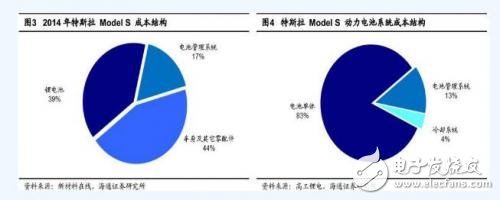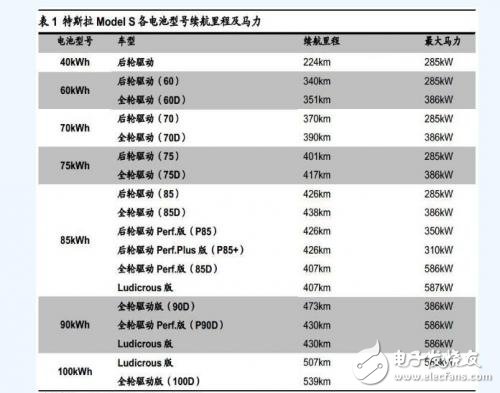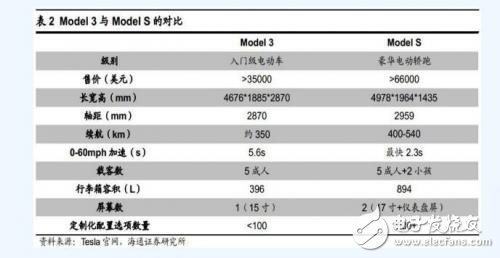Accurately estimate the state of charge (SOC) of the power battery pack, that is, the remaining battery power, to ensure that the SOC is maintained within a reasonable range, to prevent damage to the battery due to overcharge or overdischarge, thereby predicting the hybrid power at any time. How much energy is left in the car's energy storage battery or the state of charge of the energy storage battery.
Dynamic monitoring of the working status of the power battery pack:During the charging and discharging process of the battery, the terminal voltage and temperature, the charging and discharging current and the total battery pack voltage of each battery in the battery pack of the electric vehicle (which should be the power battery pack) are collected in real time to prevent the battery from being overcharged or overdischarged. . At the same time, the battery condition can be given in time, and the problematic battery can be selected to maintain the reliability and high efficiency of the entire battery operation, and the realization of the remaining battery estimation model becomes possible. In addition, it is necessary to establish a usage history file for each battery to provide data for further optimization and development of new types of electricity, chargers, motors, etc., and to provide a basis for offline analysis system failure.
Equilibrium between cells and battery packs:
That is, the cells are balanced between the battery cells and the battery packs, so that the batteries in the battery pack are in a balanced state. Battery balance is generally divided into active equalization and passive equalization. Most of the BMSs that have been put on the market today are passively balanced. Equilibrium technology is the key technology of a battery energy management system that the world is currently researching and developing.
Development status of battery management systemIn the future, electric vehicles will use lithium batteries as the main driving source. The main reason is that lithium batteries have high energy density advantages, so the performance is relatively stable. However, the quality of the lithium battery is difficult to master when it is mass-produced. There is a slight difference in the power of the battery core when it leaves the factory. With the operating environment, aging and other factors, the inconsistency between the batteries will become more and more obvious, and the battery efficiency and life will also be worse. In addition, if it is overcharged or over-discharged, it may cause safety problems such as fire and burning. Therefore, the battery management system (BMS) can accurately measure the battery pack usage, protect the battery from overcharging and discharging, balance the power of each battery in the battery pack, and analyze and calculate the battery pack's power and convert it into driving. Understand the endurance information to ensure that the power battery can operate safely.
In 2012, the global battery management system (BMS) market value increased by more than 10%, and the growth rate will jump to 25-35% from 2013 to 2015. At this stage, whether it is an OEM, a battery factory, or a related vehicle-electric component factory, it has invested in battery management system (BMS) research and development in order to grasp the key technologies of the electric vehicle industry. Since the vehicle factory is a user of the battery management system, the car factory has many It prefers to use its own software processing and is controlled by a special factory to maintain operational flexibility. The development of the battery management system (BMS) industry may be similar to lithium batteries. In order to master key technologies, the car manufacturers will cooperate closely with long-term suppliers to develop products, which is difficult for newcomers to enter. Therefore, in the future, newcomers want to cut into the supply chain of the car manufacturer. In addition to strengthening the cooperation relationship with the relevant supply chain, it is only possible to seize the opportunity to build a customized solution for the demand.
Tesla's battery systemThe battery system is the power source for electric vehicles and is the core system component of the entire industry chain. Taking Tesla ModelS as an example, its battery system (lithium battery + battery management system) costs 56%, while the traditional car engine accounts for only 15%-25%. By 2016, the cost of battery systems has decreased, and the cost structure has also changed. The cost of single cells accounts for 83%, the cost of battery management systems accounts for about 13%, and the remaining 4% is battery cooling system. . By thoroughly combing the composition of the Tesla battery system and the Tesla charging facilities, we can have an intuitive and in-depth understanding of Tesla's battery industry chain, and it can also be used as a bypass for other new energy vehicles. effect. The current cost of the battery system is one of the most important factors restricting the development of Tesla and other new energy vehicles. Understanding the battery system is equivalent to having the key to understanding the new energy automobile industry.
By thoroughly combing the composition of the Tesla battery system and the Tesla charging facilities, we can have an intuitive and in-depth understanding of Tesla's battery industry chain, and it can also be used as a bypass for other new energy vehicles. effect. The current cost of the battery system is one of the most important factors restricting the development of Tesla and other new energy vehicles. Understanding the battery system is equivalent to having the key to understanding the new energy automobile industry.

In order to be practical, an electric car must consider its endurance after charging and the convenience of charging. To understand these two points, it is necessary to pay attention to the structure of the battery and the charging speed and device distribution of the charging device. ModelS has introduced battery power models of 40, 60, 70, 75, 85, 90, 100 kWh. For models of 85 kWh and above, there are also performance versions that offer better power performance, such as Perf and Ludicrous. Version. Different models, the maximum distance traveled and the maximum horsepower are different each time they are fully charged. With the advancement of technology and in order to better meet people's needs, Tesla has successively canceled some ModelS battery models, and the power models that can still be ordered today are 75, 90, 100kWh.

ModelX has introduced 60, 70, 75, 90, 100kWh models, and now only 70 and 100kWh models can be ordered. According to information from Zhongguancun Online, Tesla's basic version of the Model3 electric vehicle has a battery pack power of about 60 kWh. According to Musk's Twitter and related information, the root Lei Feng network speculated that it may be up to 75kWh. This is mainly due to the smaller wheelbase of the Model3 compared to ModelS and ModelX, and the positioning of the Model3 is also an entry point. According to ElonMusk's July 9th tweet, the first Model3 was rolled out on the same day, and Tesla will hold a delivery ceremony for the first 30 consumers who ordered Model3 on July 28. In addition, the Model3 battery is also different from ModelS and ModelX. At the media briefing held by Tesla Motors Japan on July 15, 2015, Kurt Kelty, director of battery technology at the US head office, announced that Model 3 will use the new 21700 lithium battery, and its energy density will be better than that for ModelS and ModelX. The 18650 lithium battery is 30% higher.

Unlike other electric vehicles, Tesla uses a battery that is not a dedicated large battery. Instead, it assembles thousands of small cylindrical batteries. ModelS and ModelX currently use the 18650NCA special battery supplied by Panasonic. This cylindrical battery has a cross-section diameter of 18 mm and a height of 65 mm. The conventional 18650 lithium battery is widely used in the battery of a notebook computer, and its chemical formula is LiNiCoAlO2.

The advantage of using a single battery is that the explosion of a single 18650 battery is limited. Even if one battery unit in parallel fails, the cruising range is shortened by the distance traveled by one battery unit. And this battery is mature and suitable for mass production. At the same time, the battery has good consistency and low cost.
Due to the excellent thermal management system of the Tesla electric car itself, Panasonic's 18650 battery made by Tesla has been able to remove some extra safety facilities compared to the conventional one, making it lighter and cheaper. At the same time, Tesla installed a fuse on each cell instead of normally installing a fuse across the battery pack.
Because the power system uses small single cells, Tesla's battery system configuration is extremely complex and ingenious. Taking the ModelS85kWh model as an example, the battery board is divided into 16 battery packs. Each rectangular block shown in the following figure is a battery pack, and two groups are stacked on the far right side.
The battery packs are connected in series with a total voltage of 402 volts. Each battery pack of Tesla is made up of 6 single battery packs in series, each battery pack is made up of 74 18650 batteries in parallel. In order to facilitate the placement of the heat dissipation pipes in the battery pack, the single battery packs are arranged irregularly.
Therefore, the ModelS85kWh model uses up to 7104 batteries. Calculated according to the operating voltage of 3.6V and the capacitance of 3.2Ah, the total power is about 82kWh, which is slightly lower than the model. The battery pack consisting of more than 7,000 batteries will weigh nearly 700 kilograms, accounting for nearly half of the weight of the entire car. Similarly, the 100kWh model uses a total of 8256 cells and is equally divided into 16 battery packs.

Orange Enzyme Solution Orange Enzyme Solution 3
This project Gannan quality navel orange whole fruit (not peeled) as raw materials, using self-developed patent Orange surface sterilization technology to maximize retained a whole pieces of all Orange essence (Orange: Shun Qi, phlegm, pulp: fiber laxative, fruit seeds: allergic inflammation, juice: whitening detox).
Conventional enzyme production is mainly produced by hand, hand-sliced, hand-fermentation, the company every step of the process are used self-developed technology and equipment to automate production. Moreover, the conventional enzyme production have adopted a fermentation technology, enzyme often taste discomfort, sour and other issues, I produced using a variety of enzymes, probiotics composite grade fermentation technology, fermentation at different times with different strains, and two or three times through fermentation, enzymes such pure taste, streptozotocin balanced nutrients. Scientific and standardized process:
I produced using enzymes navel cleaning, sterilization, slice, fermentation (fermentation grade composite multi-strain), solid-liquid separation, bottling and other steps. Each step developed a patented automated production equipment, fully automated production, to avoid the traditional manual production workers are not standardized, easy to pollution, low production efficiency, product quality is unstable defects.
Companies registered capital of 35 million yuan, the end of 2014 the total assets of 48.69 million yuan, including fixed assets of 37.52 million yuan. The company's existing cooperation Orange cultivation base 7043.5 acres, the company production base is located in Jiangxi County Tech Industrial Park Chu Tan industrial area, covers an area of 120 acres, it has built a standard plant 9,000 square meters, Nissan 6000 kg Orange enzymes and other liquid enzyme products. Enzyme, known as enzyme, refers to a polymer substance having biocatalytic functionality. In the catalytic reaction system an enzyme, the reactant molecules are known as substrates, enzyme substrates by catalytic conversion to another molecule. Almost all cellular activity of enzymes involved in the process are required to improve efficiency. Similar to other non-biological catalysts, enzymes chemical reactions by lowering the activation energy to accelerate the rate of the reaction, most of the enzyme catalyzed reaction rate can be increased a million times; in fact, the enzyme is to provide an activation energy needs than another low way, so that more particles to have less than the activation energy of the reaction kinetic energy, thus speeding up the reaction rate. Enzyme as a catalyst, in itself is not consumed during the reaction, it does not affect the chemical equilibrium reactions. Positive enzyme catalysis, but also a negative catalytic effect, not only to accelerate the reaction rate, but also to reduce the reaction rate. And other non-living catalysts is different, having a high degree of specificity of enzyme, only a catalytic reaction or produce a particular specific configuration.
Orange Enzyme Solution,Enzyme Essence Liquid,Fresh Orange Fermentation,Manufacturer of Orange Enzyme Solution in China TSET
Guangdong ganzhou , https://www.tlqcjs.com
